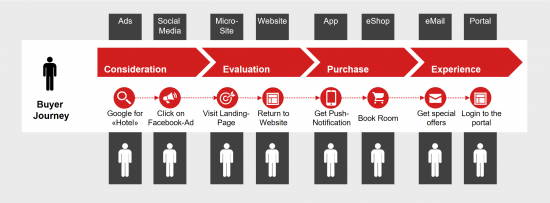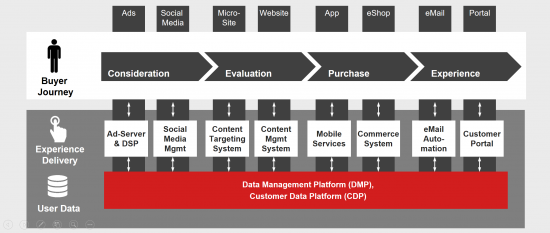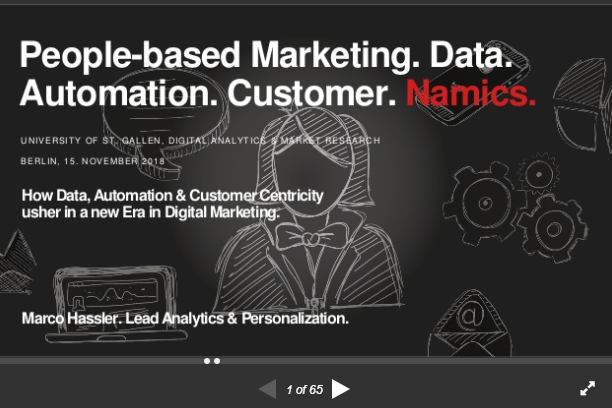Customer Centricity and People-based Marketing
With data, customer centricity and automation into the new digital marketing world
Digital marketing is currently undergoing a major change. New possibilities in terms of personalization and automation are springing up like spring flowers - just dealing with the new data protection regulations leaves an unanswered question behind one idea or another. Dynamically personalized ads that display different content even in videos - depending on the characteristics of the viewing user - are commonplace. And even personalized mail, which reminds the user of the shopping cart left behind or offers tailored inspiration, is no longer a surprise.
Despite all these new personalization and automation possibilities, the question remains: Why does the phantom of the shoe you are looking for in the shop still exist, which you follow for half a year in retargeting ads, even though you have already bought it? Why do I receive emails with discounts on products that I have just recently ordered in the shop of the same name? Why does the dashboard with the 360° customer view only tell me on an aggregated rather than individual customer level which touchpoints and channels were involved in the Journey?
The answer will remain frequent in 2018: silos, silos, silos. One can certainly speak of marketing silos in the organization of marketing departments, since teams are often organized by channel. The core problem, however, is the data silos between the channels as well as between the various user devices. User data is stored separately for each channel, e.g. in the web analytics system as well as in the e-mail system or the ad servers. Because in early marketing phases, users are often anonymous and often there is no comprehensive ID, it is correspondingly difficult to bring them together. Efforts to give users more means to control their privacy are not exactly supportive of this challenge - but certainly worth supporting. At the end of the day, the decision often remains to use the new marketing features anyway, even if they only take a section of the entire customer journey into account and lead to the side effects mentioned above.

In the past months and years, however, a lot has developed in various areas, which today offers solutions to the problems. These approaches are not as easy and quick to implement as one would wish as a marketer. However, they represent a sustainable model that brings together all user interactions, whether by anonymous users or known customers, in one system. Together with the customer-centric way of thinking in marketing and the use of highly automated personalization solutions for marketing activation, one can then speak of "person-based marketing".
The systems that offer the hand for bringing together such user interactions and data are called Data Management Platforms (DMPs) or Customer Data Platforms (CDPs). Since the product category of CDPs in particular is still very young, there is still a lack of a sharp distinction, so that products can definitely be assigned to both systems. At the core, however, remains the striving for an "identity graph" that clearly identifies the user and brings together interactions on different devices and channels.

The identification of the user also represents a particular challenge, not only from a data protection point of view, but also from a technical point of view. Probabilistic methods, which determine the coherence of several devices of a user, have only proven to be moderately reliable, but represent a building block to add a first percentage of users in the identity graph. Finally, the most reliable method remains the deterministic method, in which a user finally identifies himself at some point on each channel and each device. If you want to solve this with 1st party data, i.e. your own database, this means offering a value to a user so that he registers or connects in any form. Benefits are one instrument for this, useful and value-generating services are another. A one-time link per channel is sufficient to assign the future returning user. If you dare to venture into the realm of 2nd and 3rd party data, which is much more vulnerable under data protection law, there are services from companies such as Google or Adobe, which distribute the information from once-linked devices among the participating companies.
For successful digital marketing in the future, which can use personalized experiences along the entire buyer journey and eliminate the stumbling blocks that are common today, it is definitely worthwhile setting up such a user data layer - even though in the first step this means an Investment without a directly visible effect. The new technology and the 1st Party Data will give you the edge you need to market your products successfully in digital form.












